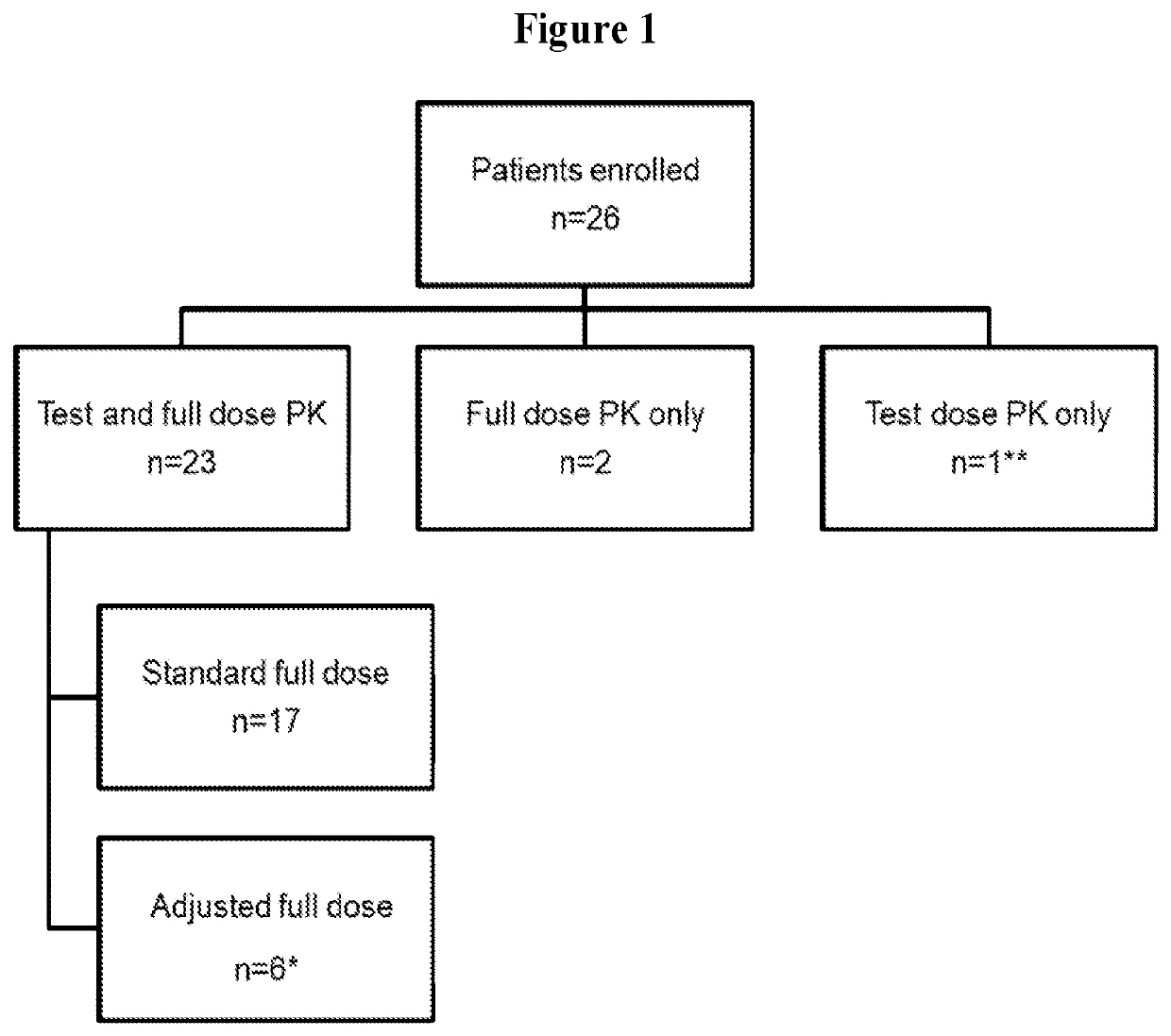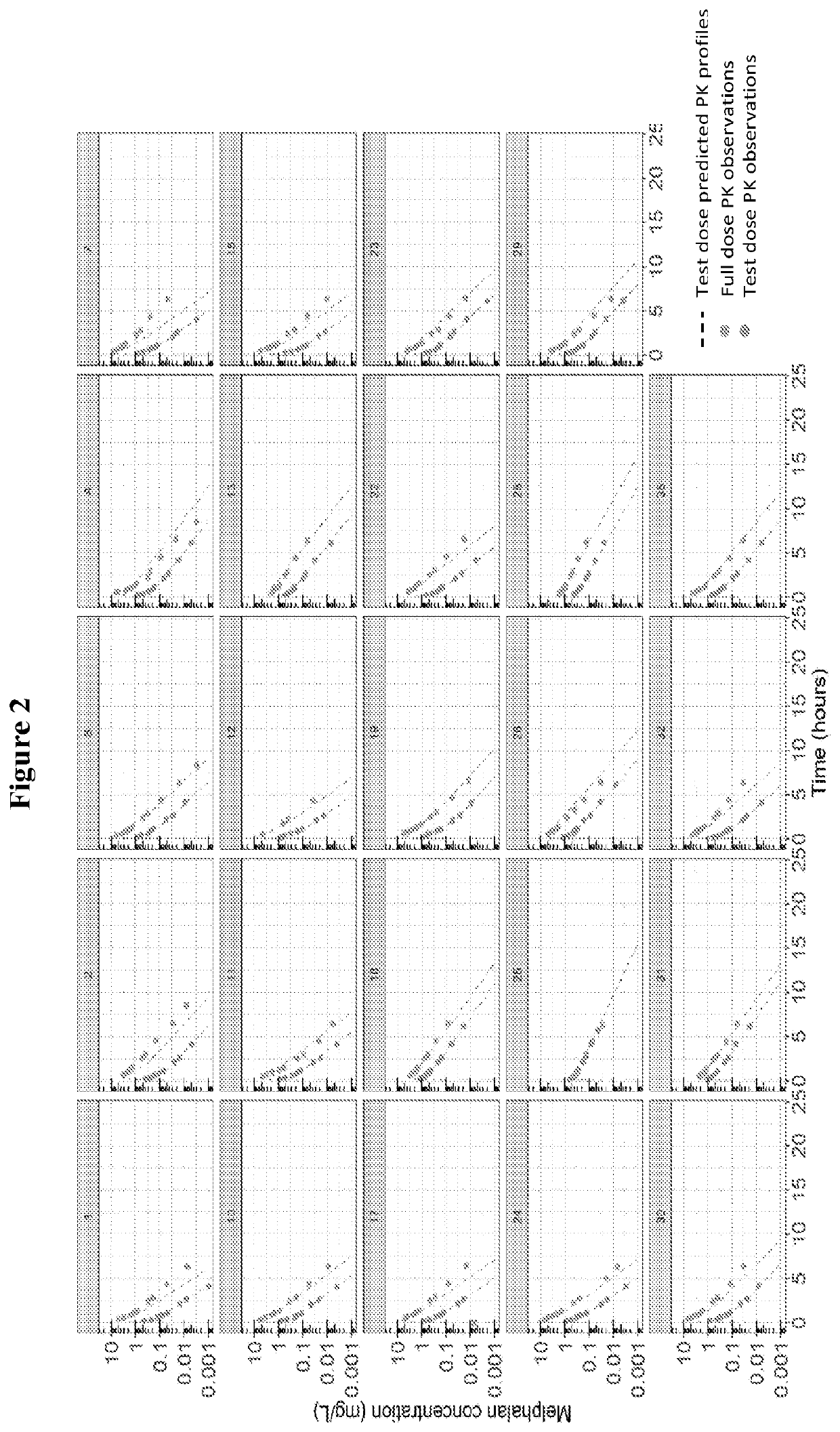Methods for determining personalized full dose of melphalan in reduced intensity regimen prior to hematopoietic cell transplantation
a melphalan and full dose technology, applied in the direction of antibodies, instruments, immunological disorders, etc., can solve problems affecting the overall transplant outcom
- Summary
- Abstract
- Description
- Claims
- Application Information
AI Technical Summary
Benefits of technology
Problems solved by technology
Method used
Image
Examples
example 1
ion of Melphalan Doses Based on Test Dose Melphalan Pharmacokinetics in Human Subjects Undergoing Reduced Intensity Conditioning Allogenic Hematopoietic Cell Transplantation for Non-Malignant Disorders
[0125]High dose melphalan (HDM) is an important component of reduced intensity conditioning (RIC) regimens in children and young adults undergoing allogeneic hematopoietic cell transplantation (HCT) for non-malignant disorders and can be associated with significant non-hematological toxicity. Reported herein is a study on melphalan pharmacokinetics (PK) in children and young adults undergoing allogeneic HCT for non-malignant disorders using a uniform combination of fludarabine, melphalan and alemtuzumab based RIC regimen. Feasibility of melphalan test dose PK guided precision dosing was also evaluated using a novel paper spray mass spectrometry assay (PS-MS / MS) and conventional liquid chromatography electrospray ionization mass spectrometry (LC-MS / MS).
Methods
[0126](i) Pharmacokinetic S...
example 2
PK Study of Melphalan in Whole Blood by PS-MS / MS Method
[0153]Melphalan (4-[Bis(2-chloroethyl)amino]-L-phenylalanine, Alkeran®) is a bifunctional alkylating agent that inhibits DNA and RNA synthesis, cross-links strands of DNA and acts on both resting and rapidly dividing cells including tumor cells. High-dose melphalan is an important component of many hematopoietic stem cell transplantation (HSCT) preparative regimens to facilitate engraftment. Shaw P J, et al., Bone Marrow Transplant 1996; 16: 401-5 and Michel G, et al., Bone Marrow Transplant. 1988 March; 3(2):105-11. However, the toxicity of high dose melphalan is profound, and can be life threatening at times, affecting overall transplant outcomes. Although the pharmacokinetics (PK) of melphalan has been studied in animal models and in adult patients, such as Moreau P, et al., Br J Haematol 1996; 95: 527-30, Kuhne A, et al., Clin Pharmacol Ther 2008; 83: 749-757, and Sham P J, et al., Bone Marrow Transplantation. 2014, 49: 1457...
PUM
| Property | Measurement | Unit |
|---|---|---|
| Fraction | aaaaa | aaaaa |
| Time | aaaaa | aaaaa |
| Time | aaaaa | aaaaa |
Abstract
Description
Claims
Application Information
 Login to View More
Login to View More - R&D
- Intellectual Property
- Life Sciences
- Materials
- Tech Scout
- Unparalleled Data Quality
- Higher Quality Content
- 60% Fewer Hallucinations
Browse by: Latest US Patents, China's latest patents, Technical Efficacy Thesaurus, Application Domain, Technology Topic, Popular Technical Reports.
© 2025 PatSnap. All rights reserved.Legal|Privacy policy|Modern Slavery Act Transparency Statement|Sitemap|About US| Contact US: help@patsnap.com



